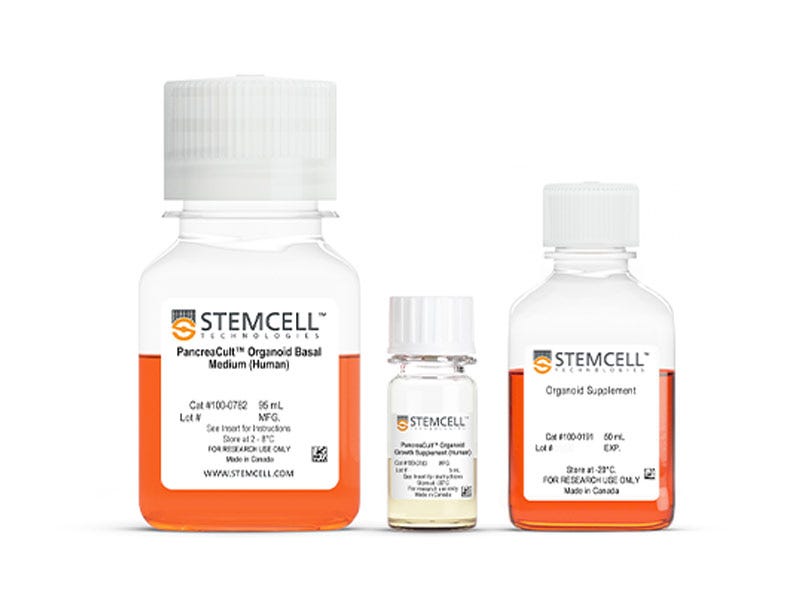±Ź²¹²Ō³¦°ł±š²¹°ä³Ü±ō³Łā„¢ Pancreatic Organoid Culture Media
±Ź²¹²Ō³¦°ł±š²¹°ä³Ü±ō³Łā„¢ Media for Pancreatic Organoid Culture
Researcher Interview: Dr. Meritxell Huch
In 2013, Dr. Meritxell Huch et al. first described the culture of pancreatic tissues as organoids. In this researcher interview, Dr. Huch discusses what led her to studying organoids and provides her insight for where she thinks the use of organoids is headed.
Why Use ±Ź²¹²Ō³¦°ł±š²¹°ä³Ü±ō³Łā„¢?
- In vitro system for generating organoids within a week.
- No injury models, hand-picking of ducts or cell sorting required.
- Serum-free and defined medium formulation.
- Organoids can be grown from duct fragments or single cells and be cultured in matrix domes or suspension.
Products for Pancreatic Organoid Culture
Brand History
Despite the prevalence and importance of research into pancreatic cancer during the recent decades, ex vivo culture of pancreatic exocrine tissues has remained difficult until recently. In 2013, described an efficient method for the propagation of pancreatic tissues in vitro as organoids. In 2014, Dr. Hans Clevers and Foundation Hubrecht Organoid Technology signed an agreement with ŗŚĮĻ³Ō¹Ļ to manufacture and distribute cell culture media for organoids. ±Ź²¹²Ō³¦°ł±š²¹°ä³Ü±ō³Łā„¢ Organoid Growth Medium (Mouse) was released in early 2018, providing researchers with a robust medium for establishing and maintaining pancreatic exocrine organoids.
Key Applications of Pancreatic Organoids
Adult-Tissue Derived Pancreatic Organoids
Broutier L, et al. (2016) Nat Protoc. 11(9): 1724-43.
Hindley CJ, et al. (2016) Dev Biol. 420(2): 251-261.
Huch M, et al. (2013) EMBO J. 32(20): 2708-21.
hPSC-Derived Pancreatic Organoids
Hohwieler M, et al. (2016) Gut. 66(3): 473-486.
Cancer Research
Avars M, et al. (2017) Oncotarget. 8(48): 83370-83383.
Ferreira RMM, et al. (2017) Cell Rep. 21(4): 966-978.
Chio II, et al. (2016) Cell. 166(4): 963-976.
Baker LA, et al. (2016) Trends Cancer. 2(4): 176-190.
David CJ, et al. (2016) Cell. 164(5): 1015-30.
Boj SF, et al. (2015) Cell. 160(1-2): 324-38.
Roe JS, et al. (2017) Cell. 170(5): 875-888.
Sinha S, et al. (2017) Cancer Res. 77(8): 1868-1879.
Pancreatic Cell Biology
Park I, et al. (2017) FEBS J. 284(23): 4035-4050.
Westphalen CB, et al. (2017) Cell Stem Cell. 18(4): 441-55.
Azzarelli R, et al. Dev Cell. 41(3): 274-286.





